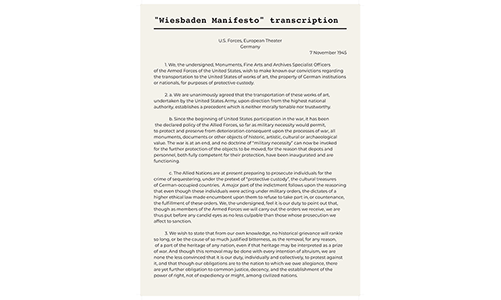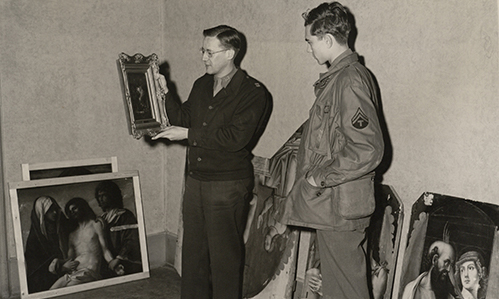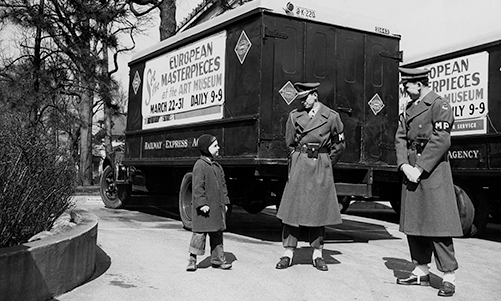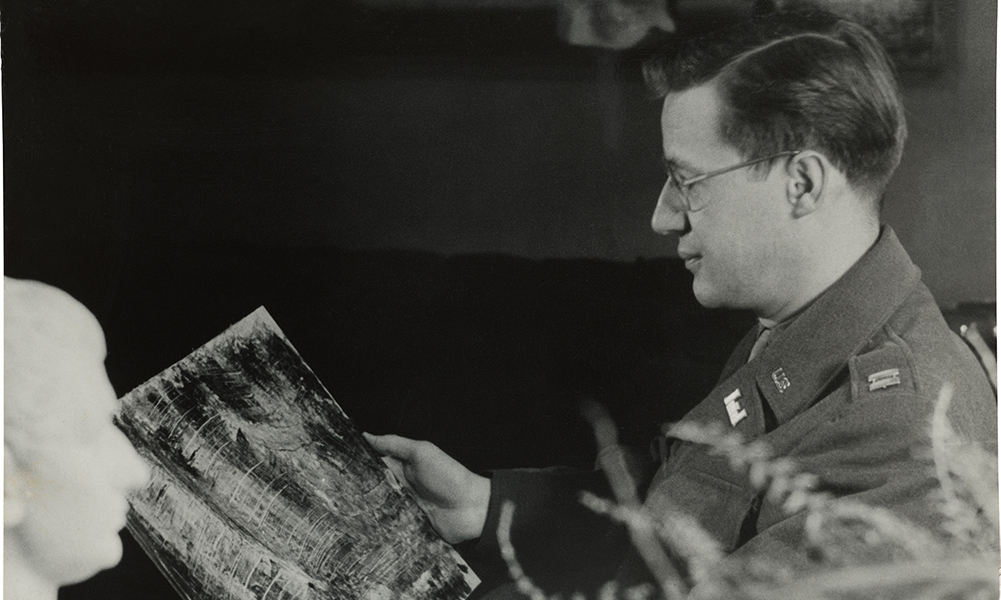- Art Home
- Exhibitions
-
Explore the Collection
- Explore the Collection Home
- African Art
- American Paintings, Sculpture and Drawings
- Contemporary
- Decorative Arts and Design
- East Asian Art
- European Paintings, Sculpture and Drawings
- Fashion Arts and Textiles
- Musical Instruments
- Indigenous American Art
- Photography
- Prints
- South Asian Art, Islamic Art and Antiquities
- Provenance and Cultural Property
- Conservation
- Meet the Curators
- Digital Resources
- Art Bridges Cohort Program
- Events & Programs Home
- Calendar
- Accessibility
- Adults
-
Families & Teens
- Families & Teens Home
- 10x10 Teen Art Expo
- Art on the Rise
- Art Together: Art Making for Families with Children Ages 3–5
- Boy Scouts / Girl Scouts
- CAM Kids Day
- Family Storytime and Gallery Walk
- Family Studio: Art Making for Families with Children Ages 6–12
- Games in the Galleries
- Members-Only Baby Tours
- Public Baby Tours
- REC Reads
- Rosenthal Education Center (REC)
- See Play Learn Kits
- Summer Camp
- Teachers
- Community Outreach
- Fundraisers
- Plan Your Own Event

- Art Home
- Exhibitions
-
Explore the Collection
- Explore the Collection Home
- African Art
- American Paintings, Sculpture and Drawings
- Contemporary
- Decorative Arts and Design
- East Asian Art
- European Paintings, Sculpture and Drawings
- Fashion Arts and Textiles
- Musical Instruments
- Indigenous American Art
- Photography
- Prints
- South Asian Art, Islamic Art and Antiquities
- Provenance and Cultural Property
- Conservation
- Meet the Curators
- Digital Resources
- Art Bridges Cohort Program
- Events & Programs Home
- Calendar
- Accessibility
- Adults
-
Families & Teens
- Families & Teens Home
- 10x10 Teen Art Expo
- Art on the Rise
- Art Together: Art Making for Families with Children Ages 3–5
- Boy Scouts / Girl Scouts
- CAM Kids Day
- Family Storytime and Gallery Walk
- Family Studio: Art Making for Families with Children Ages 6–12
- Games in the Galleries
- Members-Only Baby Tours
- Public Baby Tours
- REC Reads
- Rosenthal Education Center (REC)
- See Play Learn Kits
- Summer Camp
- Teachers
- Community Outreach
- Fundraisers
- Plan Your Own Event
3. The “Berlin 202” & the Wiesbaden Manifesto
3. The “Berlin 202” & the Wiesbaden Manifesto
- Home
- Plan Your Visit
-
Art
- Art Home
- Exhibitions
-
Explore the Collection
- Explore the Collection Home
- African Art
- American Paintings, Sculpture and Drawings
- Contemporary
- Decorative Arts and Design
- East Asian Art
- European Paintings, Sculpture and Drawings
- Fashion Arts and Textiles
- Musical Instruments
- Indigenous American Art
- Photography
- Prints
- South Asian Art, Islamic Art and Antiquities
- Provenance and Cultural Property
- Conservation
- Meet the Curators
- Digital Resources
- Art Bridges Cohort Program
-
Events & Programs
- Events & Programs Home
- Calendar
- Accessibility
- Adults
-
Families & Teens
- Families & Teens Home
- 10x10 Teen Art Expo
- Art on the Rise
- Art Together: Art Making for Families with Children Ages 3–5
- Boy Scouts / Girl Scouts
- CAM Kids Day
- Family Storytime and Gallery Walk
- Family Studio: Art Making for Families with Children Ages 6–12
- Games in the Galleries
- Members-Only Baby Tours
- Public Baby Tours
- REC Reads
- Rosenthal Education Center (REC)
- See Play Learn Kits
- Summer Camp
- Teachers
- Community Outreach
- Fundraisers
- Plan Your Own Event
- Give & Join
- About
- Tickets
- Calendar
- Exhibitions
- Blog
- Shop
- Art
- Exhibitions
- Farm to Table: Food and Identity in the Age of Impressionism
- Cycle Thru! The Art of the Bike
- Tintoretto’s Genesis
- Upcoming Exhibitions
- Online Exhibitions
- Special Features
- Past Exhibitions
- Explore the Collection
- Provenance and Cultural Property
- Conservation
- Meet the Curators
- Digital Resources
- Art Bridges Cohort Program
As the Allies advanced into Germany in April 1945, General Patton’s U.S. Third Army discovered the collections of the Berlin State Museums, along with the Nazi gold reserves, hidden in a salt mine. These objects were not Nazi loot, which the Allies also found in staggering quantities, but German patrimony. In August, the Berlin collections were transferred to the Central Collecting Point in Wiesbaden, an army storage depot directed by Captain Walter I. Farmer of Cincinnati. Farmer was a “Monuments Man,” one of a group of men and women tasked with locating and safeguarding works of art.
In November 1945, Farmer received an order from the U.S. military government that “at least 200 German works of art of greatest importance” be prepared for transfer to the U.S. for safekeeping. Shocked and concerned that this would amount to claiming the art as spoils of war, Farmer and his fellow Monuments Men drafted a protest known as the Wiesbaden Manifesto. It had no immediate effect: their commanding officer did not send it up the chain of command. Later that month, 202 paintings were shipped to the National Gallery of Art in Washington, D.C.
However, the manifesto was distributed in art circles, reported on, and ultimately published in January 1946, igniting a public discussion of ethics and U.S. policy. Although President Truman declared the transfer a safekeeping mission, members of the museum community, the press, and the Monuments Men felt that this was at odds with America’s commitment to protecting the cultural heritage of other countries during the war.
Cincinnati, OH 45202
Toll Free: 1 (877) 472-4226
Museum Hours
Museum Shop
Terrace Café
Library
The Cincinnati Art Museum is supported by the generosity of tens of thousands of contributors to the ArtsWave Community Campaign, the region's primary source for arts funding.

Free general admission to the Cincinnati Art Museum is made possible by a gift from the Rosenthal Family Foundation. Exhibition pricing may vary. Parking at the Cincinnati Art Museum is free.
Generous support for our extended Thursday hours is provided by Art Bridges Foundation’s Access for All program.

General operating support provided by:



 Wiesbaden Manifesto
Wiesbaden Manifesto
 Geborgene Schätze or Salvaged Treasures
Geborgene Schätze or Salvaged Treasures
 Exhibition of German-Owned Works of Art
Exhibition of German-Owned Works of Art
 Commander's Cross
Commander's Cross
